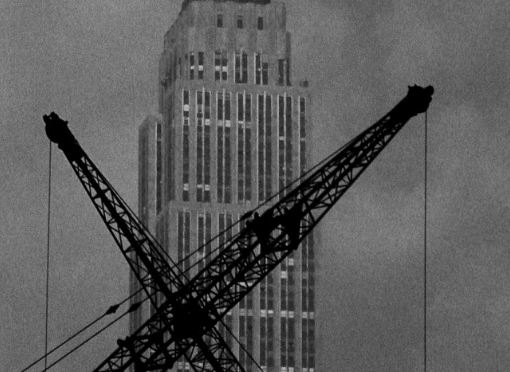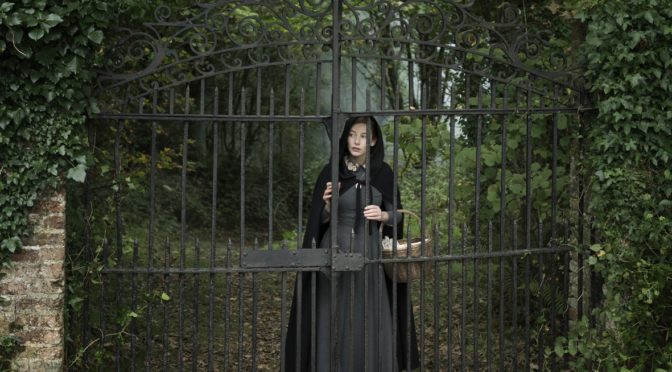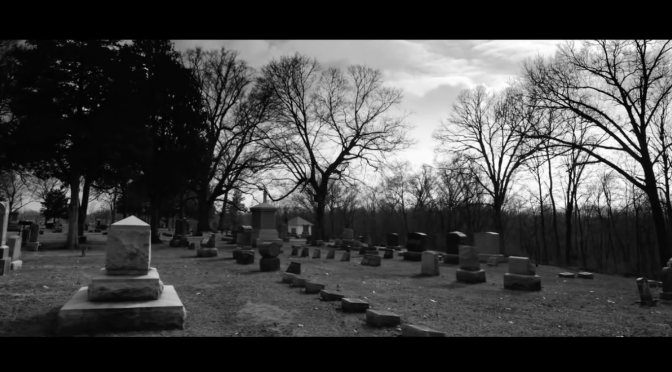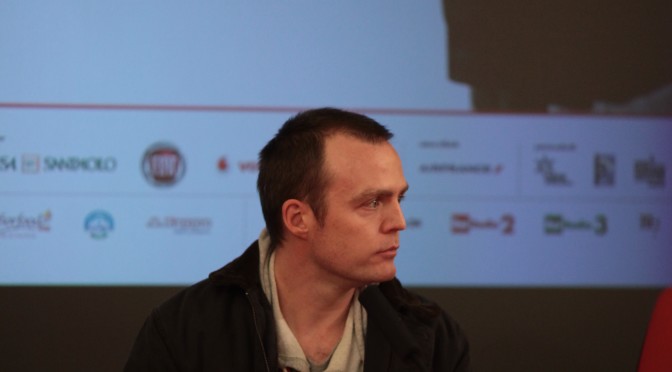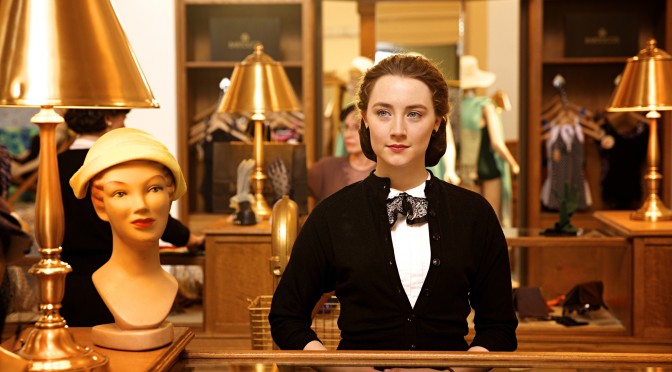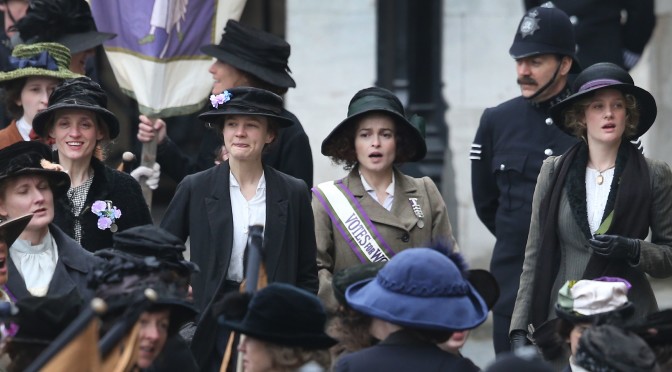Manfred Kirchheimer, classe 1931, ha recentemente dichiarato che non è mai, nella sua lunga carriera da regista, riuscito a coprire i costi dei suoi film con gli incassi. Ed è a questo punto che un vero cinefilo drizza le orecchie e si segna il nome sul taccuino, perché le alternative sono due: il regista tedesco, adottato newyorkese, è frainteso ma testardo, oppure è completamente dislocato dalle logiche di introito che tanto guastano l’arte cinematografica. Per quanto riguarda Dream Of A City, è la seconda. L’attitudine veritiera con cui viene analizzata e scomposta la vita urbana nella Grande Mela, rende questa pellicola di 39 minuti un gioiello del cinema d’essai. Continua la lettura di “DREAM OF A CITY” DI MANFRED KIRCHHEIMER
Archivi tag: TFF
“The Lodgers” by Brian O’Malley
Versione inglese a cura del Master in Traduzione per il Cinema, la Televisione e l’Editoria Multimediale
Article by: Dario Grande
Translation by: Melissa Borgnino
1920s. Next to a lake, in the middle of nowhere in the Irish countryside, stands an old crumbling mansion, where twins Rachel and Edward live. The lives of the twins, entangled in a morbid relationship, are constantly plagued by a curse that has been lingering over their family for generations. Every night, ominous forces that inhabit the bottom of the lake invade their house, and compel them to meticulously follow some rules: always be in bed by midnight, never let strangers inside the house, and never try to escape in order not to jeopardize the other sibling’s life.
“The Lodgers” di Brian O’Malley
Anni ’20. Accanto ad un lago, sperduta nelle campagne irlandesi, sorge una vecchia villa cadente, abitata dai gemelli Rachel ed Edward. La vita dei due giovani, stretti da un legame morboso, è quotidianamente assillata dalla maledizione che da generazioni regna sulla tenuta di famiglia. Ogni notte infatti, sinistre presenze – che abitano il fondo del lago – invadono l’abitazione, obbligando i gemelli a seguire delle precise regole: essere sempre a letto entro mezzanotte, non accogliere sconosciuti in casa, non tentare mai di scappare per non mettere a repentaglio la vita dell’altro. Continua la lettura di “The Lodgers” di Brian O’Malley
Presentazione di TFF34 al DAMS
15 novembre. Palazzo Nuovo, Aula 33. Ore 09:00
Puntuale si ripresenta la stretta collaborazione tra il TFF e il Dams di Torino. Oggi l’ospite d’eccezione Emanuela Martini, direttrice della kermesse torinese, ha presentato il programma agli studenti, calcando la cattedra universitaria insieme al prof. Alonge durante la lezione di Storia del Cinema.
“Iona” di Scott Graham
Scott Graham. Conosciamo già questo nome, perché nel 2010 ha partecipato al Torino Film festival con Shell, film con il quale ha vinto il premio per il miglior film.
In questa edizione del Festival si presenta con Iona, un film che non si discosta molto dal primo, soprattutto in virtù del tema del conflitto famigliare, argomento che sembra stare molto a cuore al regista. Graham ha dichiarato che il suo obiettivo è quello di realizzare una trilogia di cui Iona è il secondo capitolo.
Return to Spoon River by Francesco Conversano and Nene Grignaffini
Article by: Giulia Conte
Translation by: Lorenzo Matarazzo
Nene Grignaffini and Francesco Conversano dedicate a film to the Spoon River Anthology to celebrate the hundred years from the publishing of the famous poetry collection by Edgar Lee Masters. The movie was shot in Lewiston and Petersburg, Illinois, where the current inhabitants of those places read the compositions in their houses’ rooms. Slow pace, even too much sometimes, but a particular idea for sure. 104 minutes of traveling through small towns which tell the tale of the provincial America and the lives of those who live there.
All of the characters who read one of the epitaphs, identify themselves with one of the protagonists from the book, as if the latter were speaking of their lives too.
“All, all, are sleeping on the hill.”
Time is still, and the film moves from house to house, listening to the story of everyone. The feeling is that the inhabitants of the two cities are lazily living their lives, stuck like the Spoon River characters, who, and here lies the difference, were dead. As it is well known, life in suburban America can be many things, except easy and fun. This narration is a clear example of what means living isolated and almost imprisoned in cities, which might be big under the aspect of territorial extension but empty and not interesting on a cultural level.
One of the Lewiston citizens reads one the most touching sentences from the Anthology:
“It takes life to love life”
This to say that a certain kind of spirit is needed to love life, despite living there.
The Spoon River Anthology is a work written in 1915, which is still very contemporary today: George Gray said:
Yet all the while I hungered for meaning in my life.”
And I think that this is a very common thought, shared by anyone of us, just like it is by the characters of the movie.
The work of Grignaffini and Conversano is entirely focused on this aspect, i.e. passing on the hunger for life and the willingness of persons to tell themselves, in order to give life to an film that, although not easy in its comprehension, is moving and makes one think.
“Il giorno dei Trifidi” (“The Day of the Triffids”) di Steve Sekely
È un letale spettacolo pirotecnico quello che illumina il cielo londinese durante una notte misteriosa: centinaia di meteoriti colpiscono la Terra producendo lampi che accecano chiunque si soffermi a guardarli e liberando una micidiale specie arborea. Ha inizio il giorno dei Trifidi, enormi piante carnivore dotate di capacità locomotorie: sono intelligenti, velenosi, affamati e decisamente poco adatti ad ornare un elegante giardino all’inglese.
Continua la lettura di “Il giorno dei Trifidi” (“The Day of the Triffids”) di Steve Sekely
“Iona” di Scott Graham – Conferenza stampa
In conferenza stampa è oggi protagonista il film Iona, del regista Scott Graham.
Scott Graham ha già partecipato al Torino Film Festival nel 2012 vincendo il premio per il miglior film con Shell. Bruno Fornara fa notare al regista che il tema che lega i due film è la solitudine. Graham spiega che quando ha deciso di girare Shell sapeva già che si sarebbe cimentato con il tema che poi sarebbe confluito in Iona.
Continua la lettura di “Iona” di Scott Graham – Conferenza stampa
Brooklyn by John Crowley
Article by: Giulia Conte
Translation by: Rita Pasci
Brooklyn, a drama directed by John Crowley and written by Nick Hornby, based on the novel of the same name by Colm Toìbin. It’s the moving story of Eilis Racey (Saoirse Ronan), a young Irish immigrant who, attracted by the promise of America, departs from Ireland leaving her family and her home to reach the coasts of New York City. The initial chains of homesickness quickly fade away and Eilis lets herself get lost in the intoxicating charm of love. Pretty soon, her liveliness is interrupted by her past, and this young woman will have to make a choice between the two countries and the two lives they involve. Continua la lettura di Brooklyn by John Crowley
“John From” di João Nicolau
Gli anni dell’adolescenza sono i più belli e contemporaneamente i più brutti della nostra vita. Questa è una tipica frase con la quale non si sa mai se essere d’accordo o no; di certo è vero che gli anni dell’adolescenza sono quelli in cui i nostri sogni cominciano a prendere forma, a deragliare dai binari infantili verso la dura realtà. E’ un processo quasi obbligato nel percorso dall’adolescenza all’età adulta. Nel film di João Nicolau accade esattamente l’opposto.
John From by João Nicolau
Article by: Barbara Vacchetti
Translation by: Martina Taricco
Teens years are the most beautiful and the worst moments of everyone’s life at the same time: this is a classic cliché with which you never know if to agree or not. Certainly, we usually think that adolescence years are those in which our dreams start to take a more real shape and run off the rails of childhood towards the tough reality, an almost inevitable course from adolescence to adulthood. In the movie of João Nicolau we see the exact opposite of what written above.
The protagonist is Rita: she is fifteen years old and lives with her parents in a huge and odd apartment building where blue prevails. Blue are the lift doors, the mailboxes, the balconies railings. Blue is the perfect colour for the summer during which the movie is set. Perennially on the edge of boredom that is going to submerge her, Rita spends summer walking through the city, playing the pipe organ in a recreation centre and going to parties with her friend, who lives in the same building with which she exchanges some messages written on slips of paper that they hide in the lift.
To break up the monotony of this hot summer, a new neighbour comes: a man who is about thirty-five with his little daughter who has to provide for. His name almost eludes the audience attention because very soon, this absent-minded photographer calls the attention of Rita. Nonetheless, the girl does not see him as he truly is but as the character of the title, John From.
Aided by the fact that the photographer is exhibiting the pictures that he shot in Melanesia, Rita starts to imagine him as the god John From that, according to Melanesian legends, is described as an American soldier “fallen from the sky”. Rita connects this legend to her new neighbour, fallen from the sky as well, like a blessing or a potion against the boredom. Therefore, the attempts of Rita to approach him begin but they all end in inconclusive meetings.
In the midst of her daydreaming, Rita starts to mix up what really happens with what she would like to happen; the boundaries between reality and imagination becomes more and more weak until they merge together. It is therefore difficoult to distinguish the reality from the dream, so that when we are in love, an ordinary wave becomes a sign of fate. Rita plays a game: she questions her iPod, close her eyes, browse the songs then she stops at random and the title of the song should tell her the answer to her question.
Nicolau shows us this adolescent world in a disenchanted and realistic way, dressed up with a touch of irony that could make the movie irresistible. A world in which the parents are distant but caring all the same, teenagers are mature thanks to their experiences and disappointments and an ordinary crush could turns into an endless dream of a wedding and beach games.
“Akira” di Katsuhiro Ôtomo
Neo Tokyo, 2019. Dopo la Terza Guerra Mondiale il Giappone è in crisi. Economia allo sbando, politica corrotta e inefficace non riescono a trovare il modo di far ripartire un Paese in cui il crimine e la violenza la fanno da padrone. Unica cosa che sembra importare al Governo è Akira, sorta di progetto segretissimo volto al controllo di un potere enorme, che ha causato il proliferare di sette di invasati in tutta la città, i quqli predicano l’avvento di una divinità chiamata Akira. In questo caos sfrecciano su bolidi truccati gang di motociclisti, tra cui anche Kaneda e Tetsuo, ma un incidente inaspettato durante una scorribanda notturna come tante cambia per sempre le loro vite e quelle dell’intera nazione.
Akira by Katsuhiro Ôtomo
Article by: Matteo Merlano
Translation by: Kim Turconi
Neo Tokyo, 2019. After the third World War, Japan is in crisis. Economy in ruin in addition to corrupted and ineffective politics cannot find a way to start up again a Nation where crime and violence rule the roost. The only thing which seems to be of a certain relevance to the government is the Akira Project, sort of super secret project intended to control an enormous power, which has caused sects of obsessed people to flourish all around the city, preaching the arrival of a divinity called Akira. In this chaos, gangs of bikers speed across the city on modified beasts. Among them there are Kaneda and Tetsuo. An unexpected accident during one of the many raids, will change their lives and those of the entire nation forever.
Undisputed masterpiece of Japanese animation, the movie of Katsuito Otomo is not just a cinematographic opera, but a whole experience, leaving the audience breathless. Produced in 1988 (in Italy came out only in 1992) it was the most expensive anime in History (with a budget of one billion yens) and brought to the creation of a specific production house to realize it, the Akira Committee, with Otomo himself as the chairman, who employed for years more than one thousand animators. All the fears and the contradictions of that decade are contained in this dystopia which draws fully from western cult movies. An elaborate, chaotic and colossal Neo Tokyo is the spitting image of the rainy Los Angeles from Blade Runner (the time of setting is, for this reason, not randomly chosen) ruled by lawless riders (Mad Max) who go all around the city on futuristic bikes (Kaneda’s motorcycle design is identical to the lightcycles from Tron). The aesthetic magnificence is something which leaves everyone amazed and the masterly sound work, overseen by composer Shoji Yamashiro, was an epochal evolution in the animation field.
The concept of Evolution itself is the base of Akira. What is this mysterious energy, so devastating that it needs to be hidden in the bowels of the earth? Who controls it? Where it comes from? Who owns it and how can it be used? The spiritual aspect of the film lies in this ambivalence of the concept of Evolution – especially technological evolution – which often leads to a regression when technology goes too far.
Is it creative or destructive? Otomo is certainly a son of Hiroshima and Nagasaki. That “sun” – which kills tens of thousands people in a few seconds – has affected his worldview. Evolution is a powerful force, but it can cause pain if mishandled. Akira embodies this philosophy and make it to burst with an explosion of visual effects and visionary experiences that leave an impression on one’s mind. The future portrayed by Otomo is crazy, chaotic and illuminated only by neon signs and skyscrapers lights. It is a future in which people run at full speed without any purpose, or they run for the wrong reasons.
The title of this review is taken from the famous Blade Runner monologue of Roy Batty/Rutger Hauer. Our choice has not been accidental, because the Future is already here – and perhaps already experienced. Otomo, just like Scott, “has seen things”. And we have seen them with him.
Lo scambio (Nameless Authority) by Salvo Cuccia
Article by: Lorenzo Trombi
Translation by: Martina Taricco
Torino, November 23, 2015 – Lo Scambio, directed by Salvo Cuccia, is one of the four Italian movies which run in the main section of the 33rd Torino Film Festival.
The story is inspired by real events. The director wrote it after several meetings with Magistrate Alfonso Sabella, where the two had the chance to touch the subject of a mafia homicide in which three young boys were killed: two of them were, without any doubt, not tied to organized crime.
The first estranging element is that characters in this story do not have a name: this choice contributes to amplify the ambiguity of the plot. The whole sequence of events starts in media res with a series of crossfades of people walking in a normal city market. The music is deafening. Here, all of a sudden, two strangers appear on the scene and kill two young boys.
In the next scene the action moves on to a police station, where something does not completely persuade the audience. Although the badge of people who work in such place is shown many times, there are some elements, scattered all along the movie, which give to the public the feeling of not really being in a law seat. In a narrative climax, played on the edge of uncertainty and of the untold, is instilled the doubt that who serves the law might, actually, be a ruthless mafia boss. The proof of this comes shortly after, in a scene where a presumed chief of police, one of the protagonists, is shown, years before, while being questioned himself.
On a scenographical level, there is an interesting contrast between very austere house interiors and the exteriors of an extremely degraded Palermo. The interiors where a hypothetical Janus Bifrons moves, that is to say the chief of police who actually is a mafia boss, are rational and tied. It is however behind this formalism and this aseptic cure that a strong anguish feeling is hidden. The pitch is reached when the boss’ wife hangs herself as she can not live secluded in her own house, hunted by her demons.
Every character has its double; their psychologies are all shifty and cryptic: anyone could be anyone else. This choice made by the director is intended to focus the audience attention on the core of the events rather than on the personalities of the characters or on relational dynamics.
Everything in the movie is made essential; the story is apparently narrated in an impersonal way. The credo that is in force in this film is not siding with anyone.
These atmospheres enhance the feeling of indefiniteness and uncertainty in which a significant thematic crux is unraveled: what if the mafia has got the wrong person?
The chief of police questions a helpless surveyor who had the bad luck of being in the wrong place at the wrong time. The man is eventually killed, an eye-opening event which shows us how the mafia can sometimes get off track when deciding who has to be killed. By this stage of the film, as confirmed by the title, it seems very likely that there was a mistake and the man was mixed up with somebody else.
The several changes of the focus really strike the eye and add to the feeling of anxiety and oppression experienced by the characters in the film.
The decision to film a gunfight without actually showing it but presenting it to the audience in a fixed camera shot and through the gunshot sound is spot on.
Similarly, in a beating scene we don’t see people fighting but it is possible to understand what is happening thanks to the noise we hear and the shadows on the walls.
Cuccia’s notable work is structured as a moral story where all events are connected in a cause-effect relationship. He depicts a dry and cold story where everything is based on retaliation.
Burnt by John Wells
Article by: Elisa Cocco
Translation by: Rita Pasci
After reaching success and having been awarded with two Michelin stars, the famous chef of a Paris restaurant, Adam Jones (played by Bradley Cooper), destroys his career with his addiction to drugs and women.
After a period of redemption, spent opening a million oysters, he decides to go back to London, determined to open the best restaurant in the world and to gain the much desired third Michelin star. In order to achieve this, however, he needs a group of experts and so he assembles the best team possible: financer Tony (Daniel Bruhl), his friend Max (Riccardo Scamarcio), his old French workmate Michel (Omar SY) and most of all, his colleague Helene (Sienna Miller), one of the best chefs on the British market.
Adam’s desire of redemption, the cooperation of his team and Helene’s love will bring him to conquer the sought-after third Michelin star.
Bradley Cooper is supported by a great cast: in addition to the above-mentioned actors, Uma Thurman plays the role of Simone Forth, the most important food reviewer in London; Emma Thompson is Dr. Hilda Rosshilde, a well-known psychiatrist; while Matthew Rhys plays the role of Montgomery Reece, a top celebrity chef well-known all around Europe, who has already owned three Michelin stars.
Burnt, directed by John Wells, tells a story about love for food and cooking, but it also focuses on the importance of second chances.
A witty, funny film. But, above all, a film that can make one’s mouth water.
- “He is a two star Michelin chef, to get even one Michelin star you have to be like Luke Skywalker, and if you manage to get three… you are Yoda”.
- “What if he is Darth Vader?”
“Borsalino City” di Enrica Viola
Borsalino City, della sempre molto fornita sezione Festa Mobile, è un documentario diretto da Enrica Viola e prodotto dalla UNA Film. Il film ripercorre la storia della ditta Borsalino; fondata ad Alessandria nel 1857 da Giuseppe Borsalino, ottenne fama internazionale con il Grand Prix del 1900 tenutosi a Parigi. Pochi mesi dopo, Giuseppe – che aveva studiato l’arte del cappellaio in giro per il mondo – morì, lasciando la Borsalino in eredità al figlio Teresio Borsalino. È in questi anni che si creò una faida all’interno della famiglia, con la scissione del cugino di Teresio, Giovanni Battista Borsalino, il quale fondò una nuova ditta chiamata Borsalino Fu Lazzaro; da questa faida nacque l’idea che forse, il vero inventore del cappello Borsalino, non era stato Giuseppe, ma suo fratello Lazzaro (il padre di Giovanni Battista). Teresio lasciò la ditta di famiglia in mano al nipote Teresio Usuelli, durante il cui mandato si festeggiò il centenario della nascita della ditta Borsalino, nel 1957; sono i loro discendenti, tra cui Vittorio Vaccarino, che raccontano le faide, le imprese e i ricordi della loro impresa di famiglia.
The Press conference: Suffragette Opens 33 TFF Press Conference
Article by: Danila Prestifilippo Translation by: Roberto Gelli
Not only was Suffragette shown yesterday evening to inaugurate 33th TFF, but also the film was the protagonist of the first press conference, which took place this morning. Film director Sarah Gavron, screenwriter Abi Morgan and one of its producers Faye Ward answered journalists’ questions and explained the film goals and the choices they made, in order to create the short film.
Muad (Carey Mulligan), a female worker, is the protagonist. She is a fictional character and fights together with other women, who represent really existed historical feminists like Emmeline Pankhurst (Merylin Streep). As director Gavron pointed out, the aim of this semihistorical approach was to make a connection between the women, who were given the mocking name Suffragettes and started their battle for their right to vote hundred years ago and modern women, who are still struggling with salary discrepancy, sexual violence and for their right to children protection and tutoring.
Suffragettes social movement has fought for fifty years but, if it is true that the first forty years had been a pacific struggle, in the following sixteen months the fight became more violent and cruel and almost none knows about it. The absence of films that tell us about the violence these courageous women had to endure, played a great role in persuading Faya Ward and Alison Owen to produce the film. Faya Ward stated: “We wanted the public to be aware of the importance of the sacrifices and the success related to Suffragettes fight. We also wanted to underline how their results are effective in nowadays society. We have tried to give modern spectators some contact points, in order for women not only to be politically active, but also to encourage them to be and become what they really feel they are or they could be. Our attempt was to give voice to those, who were not yet given their chance on the big screen.”
Abi Morgan, who had already been the screenwriter of movies such as The Iron Lady, emphasized that the challenge was to choose a really meaningful example of woman’s life and be able to put it in a precise historical context. She said: “On the one hand the character of Muad underlines the role of lots of passive supporters who became activists, on the other hand it investigates the reasons which persuaded women like her to put their jobs, their families and their homes at risk, in the name of a civil right”. The film focuses on the political matter and puts in the foreground these courageous protagonists, so the decision to not examine in depth personal stories was due to the fact that there are not enough literary or movie material at disposal, to which one can refer to. With reference to that, Morgan added that it was much more important to end the film with information about Saudi Arabia and its 2015 law concerning women right to vote only if accompanied by men, rather than to think at some sort of dramatization of Maud in the Hollywood style.
Sarah Gavron gave some further meaningful figures: “Still today, 66 million of women worldwide have no right to vote, 2/3 are illiterate and only 22% hold public offices. It says that the face of poverty is female and unfortunately these figures confirm it”.
The film’s aim is not only political and historical, it concerns the social matter too by denouncing and preventing the high young people abstaining rate, above all among women. Director Gavron told about the reaction of most of the female audience attending Suffragette’s introduction meetings. As she had hoped, after seeing the film, they expressed their wish to vote again because it made them aware of the sacrifices made by British feminist movement. She also reported that the troupe film (almost completely composed by women) wanted to give a clear signal during the film shooting, so they symbolically demonstrated against government by obtaining the permission to film in the House of Parliament in London, that same institutional place, which had declared against women right to vote.
Asked about a possible way to increase female presence in all sectors, starting from institutional offices, Abi Morgan answered: “We have to introduce the concept of positive discrimination and keep insisting about the importance women have within a context implying equality of the sexes. Geena Daves said “See in order to Be”: we need to have a radical attitude, to leverage the mass media but, in order to be successful, women complicity is essential”.
Faye Ward ended the press conference by making a consideration about the fact that Suffragette is a film of women who fight for their right to vote but “today the concept of fight may imply different ways. Each one of us can be what he wants to be, and this is true for both genders and all races. It is enough that we find our own voice and utter our words in every place, in political institutions or other kind of institutions.
February by Osgood Perkins
Article by: Valentina Di Noi
Translation by: Chiara Toscan
Osgood Robert “Oz” Perkins, son of the actor Antony Perkins, proved to be a wonder with his first work as a director, the horror thriller February. We have already seen him acting in Psycho II and more recently screenwriting The Girl in the Photographs.
February is undoubtedly a film that creates an atmosphere. The theater was immersed in the sharp frost of the snowy streets that were so white they gave a sense of purity. However, such sensation was not meant to last, as soon those streets were going to be spoiled by trails of blood.
The film is set in Kempville, Ontario Canada. It’s February and the students of the all girls boarding school “Kempville” are getting ready to leave for their hometown for the winter break. Kate (Kiernan Shipka) and Rose (Lucy Boynton) are stuck at school because their parents have mysteriously failed to retrieve them. Rose finds herself forced to babysit Kate even if they are not friends but rather share resentment. At the same time, Joan (Emma Roberts), escaped from a mental health facility, is heading towards the school, while Kate starts to have a strange attitude.
In this feature film lingers not only tension but also teenage crisis and inner torments, especially through the characters of Rose and Kate. Its deconstructing montage might create confusion, however, at the end, all the pieces of the puzzle come together.
The film has no shades, only clear contrasts: the breaks between scenes as well as music change are clear.
Just one more thing: pay attention to the cutlery and Donnie Darko‘s bunny ears.
Interruption by Yorgos Zois
Article by: Alessandro Amato
Translation by: Cristiana Caffiero
In aesthetic terms “Catharsis” means purifying the human passions that are understood and overcome with art. However, this word comes from Ancient Classic Greece and is connected with a sort of religious ritual that requires to purify both body and soul. Nowadays Greece is facing a cultural and social crisis: in few words it is an adrift country. Despite this, Greek cinema is constantly focusing on this national crisis and ready to supervise its flow. There is no real school of contemporary Greek cinema but there are several common artistic trends in these Greek movie makers.
Interruption is the first feature film by Yorgos Zois and without doubt follows this trend. This film starts with some out of focus lights blurring in a dark space. These lights stand for something not clear but alive that is going to bump soon into an unexpected future. This obscure element is actually an ancient man who’s completely naked. There’s a young blond and short haired woman with him. Those lights we have noticed at the very beginning of the film are actually Clitennestra and her lover Aegystus. Nonetheless the old man and the girl are Agamemnon and Cassandra. The starting events of The Oresteia are well known: the queen and her lover will kill the king who has come back to Troy after many years with another woman. The clash between Cassandra and the new masters of the palace occurs in a glass cube in the middle of the stage. According to mythology there should be then Orestes coming back from his exile and his vengeance versus his mother. Anyway the performance is suddenly stopped by a group of young people running through the stage and telling us they are the Chorus. Their leader is a black haired guy with an amused smile who takes some people from the audience as volunteers. They will introduce themselves and take active part in the show.
“What’s happening here is fiction or reality?” this is the question made by to a member of the Chorus to a girl.
“It’s the reality” replies the girl but she doesn’t look very convinced. The wonderful event this movie is trying to show is the theme of being guilty putting it aside for a while and playing it without misleading it. Now it’s high time to recollect Pirandello.
This movie is about a nowadays issue. At the end the young man kills himself while the theatre audience stands up thinking the tragedy came to its end. He’s another victim of nowadays spread indifference. It’s time that the actors and people taking part in the tragedy take off their clothes as a metaphor of their shame. But if they purified themselves and cleansed their guilty souls what about us and our Catharsis?
“Things to Come” (“La vita futura”) di William Cameron Menzies
Nell’immaginaria città anglosassone Everytown è in corso la seconda guerra mondiale: guerra iniziata nel 1940 e che proseguirà fino al 2040. Questa è la ragione per cui i cittadini stessi, nipoti e i bisnipoti, non si ricordano nemmeno i motivi per i quali tale guerra fosse iniziata. Il film Things to Come è stato diretto da William Menzies, uno dei maggiori scenografi della storia del cinema, che crea un gioco visivo tra utopia e distopia.
Continua la lettura di “Things to Come” (“La vita futura”) di William Cameron Menzies

